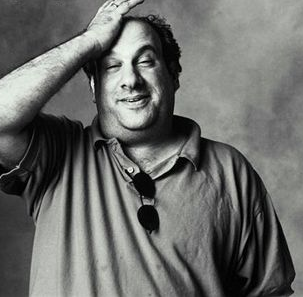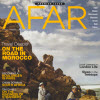We had an exceptional crop of students in the Urbino Magazine Project this summer (as we did last year). You can judge their work for yourself by checking out the magazine stories on the Urbino Project website. And, within a week or so, you’ll be able to order your very own copy of the 2012 Urbino Now magazine from MagCloud (details to follow soon).
In the meantime, we’d like to highlight some particularly well-executed stories, which were honored in our now-annual “Raffie” awards. The name of the event comes from the small (and cheesy) bust of Raphael, the Renaissance master who was born in Urbino, that is given to each winning student.

 FEATURE ARTICLE (best overall story that exhibits both exceptional writing and reporting)
FEATURE ARTICLE (best overall story that exhibits both exceptional writing and reporting)
Winners:
- Milana Katic for “Where Beer Maketh Glad the Heart of Man,” which introduces the reader to Apecchio, the heart of Italy’s emerging trend of craft beer making and beer-and-food pairings.
- Leah De Graaf for “Simplicity,” a profile of Ashley and Jason Bartner, American ex-pats who teach the Italian philosophy of slow food and slow living to their agriturismo visitors.
Runners Up:
- Mikayla Francese for “Restoring the Heart of History,” which weaves fact and theory about a 500-year-old, heart-shaped book into a romantic tale.
- Megan Northcote for “In the Footsteps of Ancient Rome,” which chronicles the work of University of Urbino archaeologists.
- Stephanie Strickland for “Mushroom Madonna,” a day with Tonti Agostina, champion mushroom hunter.
 VISUAL STORY (a well-conceived package where words and photos enhance each other)
VISUAL STORY (a well-conceived package where words and photos enhance each other)
Winners:
- Azia Touissant and Allison Butler, “La Diva della Via.” With Azia as stylist and writer and Allison as photographer, this package went way beyond the original, simple idea of finding cool fashions at the Saturday market.
Runners Up
- Leah De Graaf, “Simplicity.” Leah’s photographs beautifully communicate the pleasure this couple takes in their adopted Italian life.
- Allison Butler, “Behind the Mask.” Allison uses both words and pictures to profile two Urbino mask-makers and illuminate the theatrical tradition of Commedia Dell’Arte.
 REPORTING (best evidence of enterprise in reporting, including live interviews and background research)
REPORTING (best evidence of enterprise in reporting, including live interviews and background research)
Winner:
- Megan Northcote, “In the Footsteps of Ancient Rome” and “Driving the Via Flaminia.” Using research documents, repeated interviews with multiple major sources, and several visits to the excavation site, Megan vividly recreates a major archaeological discovery, and developed an interactive sidebar that shows visitors where they can see the ancient Roman road.
Runners Up
- Sofia Lugo, “Healing the Cracks.” For Sofia’s story about restoring art damaged in a 2009 earthquake in Abruzzo, she interviewed not only several restorers to learn about the process of art restoration and the earthquake paintings, but also interviewed a quake victim and Abruzzo’s arts and culture director.
- Milana Katic, “Where Beer Maketh Glad the Heart of Man.” In repeated visits to Apecchio, Milana toured two breweries and interviewed their brewmasters, as well as town officials and the staff of a beer-themed agriturismo.
 SHORT ARTICLE (sidebar or stand-alone short article that exhibits excellent writing and reporting
SHORT ARTICLE (sidebar or stand-alone short article that exhibits excellent writing and reporting
Winner:
- Stephanie Strickland, “Debunking the Myth of the Ducal Palace,” which proves, once and for all, that you will still get your degree if you visit the palace before you graduate.
Runner Up:
- Milana Katic, “Pass the Passatelli, Please,” an ode to this delicious Marche pasta dish.
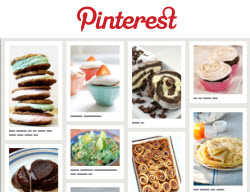

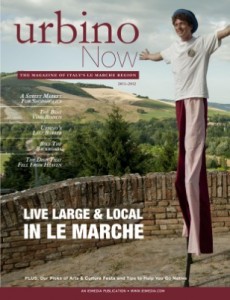

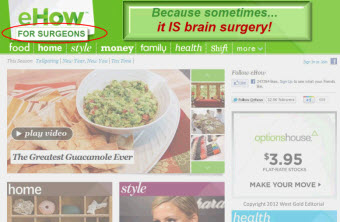 Several weeks ago, I spoke at a
Several weeks ago, I spoke at a 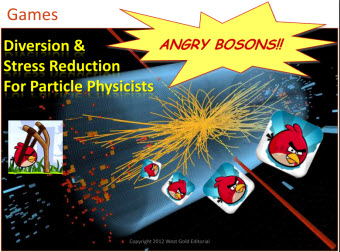 So, while we’re at it, what about a variation on a popular smartphone game to serve a specialized audience of physicists? Instead of using a slingshot to hurl birds at pigs, players would throw protons at each other in the hopes of creating the elusive Higgs particle. Call it “Angry Bosons!”
So, while we’re at it, what about a variation on a popular smartphone game to serve a specialized audience of physicists? Instead of using a slingshot to hurl birds at pigs, players would throw protons at each other in the hopes of creating the elusive Higgs particle. Call it “Angry Bosons!” A recent post on Mediabistro’s 10,000 Words blog (
A recent post on Mediabistro’s 10,000 Words blog (